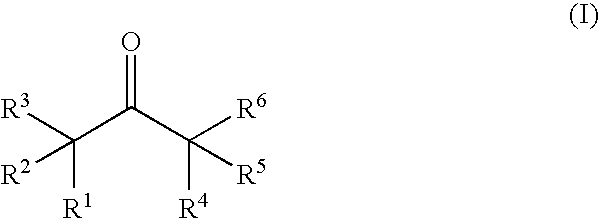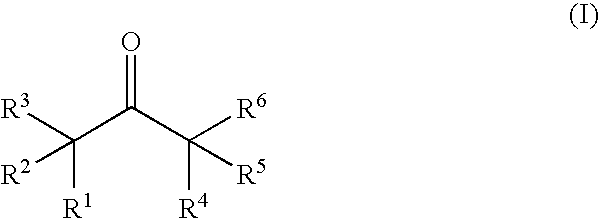Nonaqueous electrolytic solution containing ketone compound and lithium secondary battery
a technology of ketone compound and electrolysis solution, which is applied in the field of lithium secondary batteries, can solve the problems of low battery performance, insatiable battery performance such as cycle performance and electric capacity, and insufficient battery performance at present, so as to ensure battery safety, suppress production of active lithium metal, and increase resistance
- Summary
- Abstract
- Description
- Claims
- Application Information
AI Technical Summary
Benefits of technology
Problems solved by technology
Method used
Image
Examples
example 2
[0057]The procedures of Example 1 were repeated except that (−)-fenchone was employed for the electrolytic solution in an amount of 0.5 wt. %, to prepare a coin-type battery.
[0058]A battery performance after 50 cycles was measured. The discharge capacity retention was 85.9%. After the overcharging test, a lithium on the negative electrode was inactivated, and was gray.
[0059]The preparation and performances of the coin-type battery are set forth in Table 1.
example 3
[0060]The procedures of Example 1 were repeated except that (−)-fenchone was employed for the electrolytic solution in an amount of 3.0 wt. %, to prepare a coin-type battery.
[0061]A battery performance after 50 cycles was measured. The discharge capacity retention was 90.3%. After the overcharging test, a lithium on the negative electrode was inactivated, and was gray.
[0062]The preparation and performances of the coin-type battery are set forth in Table 1.
example 4
[0063]The procedures of Example 1 were repeated except that (−)-fenchone was employed for the electrolytic solution in an amount of 5.0 wt. %, to prepare a coin-type battery.
[0064]A battery performance after 50 cycles was measured. The discharge capacity retention was 88.1%. After the overcharging test, a lithium on the negative electrode was inactivated, and was gray.
[0065]The preparation and performances of the coin-type battery are set forth in Table 1.
PUM
| Property | Measurement | Unit |
|---|---|---|
| wt. % | aaaaa | aaaaa |
| wt. % | aaaaa | aaaaa |
| temperature | aaaaa | aaaaa |
Abstract
Description
Claims
Application Information
 Login to View More
Login to View More - R&D
- Intellectual Property
- Life Sciences
- Materials
- Tech Scout
- Unparalleled Data Quality
- Higher Quality Content
- 60% Fewer Hallucinations
Browse by: Latest US Patents, China's latest patents, Technical Efficacy Thesaurus, Application Domain, Technology Topic, Popular Technical Reports.
© 2025 PatSnap. All rights reserved.Legal|Privacy policy|Modern Slavery Act Transparency Statement|Sitemap|About US| Contact US: help@patsnap.com



